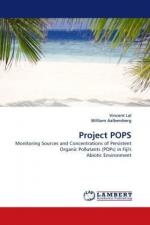|
This section contains 388 words (approx. 2 pages at 300 words per page) |
Ecologists quite commonly divide an organism's surroundings, or environment, into two categories, its abiotic environment and its biotic environment. The abiotic environment is the non-living part. Included are all the physical elements of an organism's existence, especially the intersecting roles of the sun and solar energy, weather and climate, soil, and water. The basic dependence of biotic life on the abiotic environment is the need for solar energy to be transformed, by green plants through the processes of photosynthesis, into a form of energy useable by living organisms. Climate is widely considered a major determinant of life patterns on planet earth. And, climate of course is driven by earth-sun relationships.
The quality of the abiotic environment—as measured by how well it meets organisms' needs for survival and reproduction—is a critical factor of life. Water, for example, can vary in terms of its spatial and seasonal availability, but also in terms of characteristics such as turbidity, alkalinity, pH levels, conductivity, level of dissolved oxygen, and the concentrations and combinations of various chemicals. Similar variances and spatial differences can be identified for each element of the physical or abiotic environment. Changes or perturbations in the abiotic environment can alter the conditions of organismic existence: drought, flood, fire, volcanic eruptions--all can change the conditions for life, sometimes drastically. Seemingly small, trivial, or subtle changes, such as variations or alterations in shade patterns, can also change ecological relationships. All types of ecological interactions vary in response to changes in the abiotic environment, not only those interactions between organisms and their non-living environment, but also the whole range of interactions among the organisms themselves. Adaptation and speciation are both measures of organismic response to changes in the abiotic environment.
Organisms also change the abiotic environment. In the course of the earth's history, organisms and their abiotic environment have co-evolved, each changing the other in the course of that evolution. Primitive organisms drastically changed the abiotic components of the earth, dramatically altering its receptivity to higher life forms, including, ultimately, the human species. Human activities (a biotic factor) are resulting in considerable changes in the earth's abiotic environments, including changes in global cycles: e.g., a wide variety of earth's ecosystems seem to be reacting, in multiple and varied ways, to increasing concentrations of atmosphere CO2.
|
This section contains 388 words (approx. 2 pages at 300 words per page) |


